The Friendship Oblong Baking Dish was offered as "Special Offer" for $1.99, with an item number of 933-45. The 933 represents the model number of the dish while the suffix 45 is the product code for the Friendship pattern. Often "Special Offer" items were offered by Corning as door buster sale items for department stores. To keep costs low, the pattern was only printed in one color. Newspaper advertisements indicate the dish was offer in the summer of 1972. (See The Miami Herald, July 6, 1972, page 106 and the Fort Lauderdale News, July 5, 1972, page 124).
|
The Friendship Oblong Baking Dish was previously somewhat of a mystery. The dish does not appear in Corning Product Catalogs during the era that the Friendship pattern was produced: 1971-1974. The dish is also unique in that the pattern was only printed in one color, red, rather than the two-color pattern in red and orange. These features have led researchers to conclude that the dish was produced as a promotional item or for a catalog program (e.g., S&H Green Stamps). Recently, eBay seller "thelategreats" found a dish with the original label which solves the mystery.
The Friendship Oblong Baking Dish was offered as "Special Offer" for $1.99, with an item number of 933-45. The 933 represents the model number of the dish while the suffix 45 is the product code for the Friendship pattern. Often "Special Offer" items were offered by Corning as door buster sale items for department stores. To keep costs low, the pattern was only printed in one color. Newspaper advertisements indicate the dish was offer in the summer of 1972. (See The Miami Herald, July 6, 1972, page 106 and the Fort Lauderdale News, July 5, 1972, page 124). Corning produced three "Gourmet" casseroles with similar designs in the 1960s on the round 2 1/2 Qt. casserole (475). One version has been well-documented while the exact dates of production and distribution methods for the other two versions were vague and anecdotal until recently. Gourmet Promotional Casserole (U.S.) 1961-1962The most commonly found casserole was made in Bluebelle/Delphite Blue, rather than plain opal. The exterior was painted white with a gold stem and leaf design around the circumference (see photo above, left). The casserole included a four-legged cradle with candle-warmer and flat wooden handles. This version appears in Corning distributor catalogs and advertisements as a promotional item in late 1961 through early 1962. Officially, the casserole was named, "Gourmet Casserole 2 1/2 Qt. with Candle Warmer," Item No. 56. Gourmet Black & White Casserole (U.S.) 1961-1962
Gourmet Yellow & Gold Casserole (Canada) 1968The third version of the Gourmet casserole was produced in opal with a gold stem and leaf design on yellow (see topmost photo, upper right). For many years, collectors have noticed that the majority of these casseroles were found in Canada, leading most to believe this item was produced exclusively for the Canadian market even though the back stamp reads "Made in USA."
Based on recent discussions with a collector, it turns out this casserole was, in fact, available exclusively in Canada since the box was marked Corning Glass Works of Canada, LTD, Toronto, Ontario. Most surprisingly, however, were two new pieces of information that came to light. The first surprise was that the Canadian Gourmet came with an oblong walnut serving tray rather than a cradle with candle warmer. The official name was "80 oz. Gourmet Round Casserole with Walnut Serving Tray." The second surprise was that the Canadian Gourmet casserole was offered as a promotional item many years after the U.S. versions. The box reveals the item number for the Canadian Gourmet was 6268. Assuming the same numbering conventions were used as in the U.S., the last two digits provide the year of release as 1968.
Original Post: 9/23/2015 Pyrex Passion II: Vintage Opal Dinnerware, Beverage Items, and Storage Containers documents over 60 customized opal Pyrex dinnerware patterns released in the 1950s-early 1980s. Throughout the years, Corning created custom dinnerware designs for restaurants, cafeterias, government agencies, hotels, and a variety of other institutions. Recently a new customized pattern has emerged, but the institution that ordered the pattern is a mystery. 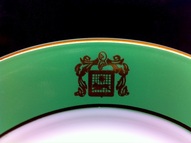 The pattern features an elaborate crest emblem that seems to depict the sun (or possibly a star) above an image of a lion or tiger. This rediscovered pattern appears in two variations. The first variation is printed in gold on a light green solid border background. The light green border is banded in 22-carat gold. In the second variation, the pattern is white printed atop a greenish-blue border with no gold band.  Most items do not contain back stamp information that would help to date the pattern. Plates include “Pyrex, Made in USA” along with the mold number, while the vegetable bowl contains the Corning Glassblower back stamp. The only clue to a possible production date is the gold band with solid border design that was used extensively on many color variations of consumer dinnerware from 1953-1963. Although items in this rediscovered pattern are still emerging, the following items have been documented in each pattern.
Light Green Solid Border with Gold Bands Tea Cup (does not include the insignia) Saucer (does not include the insignia) 9 ¼-inch Dinner Plate 5 ½-inch Bread Plate 9-inch Vegetable Bowl Greenish-Blue Solid Border 9 ¼-inch Dinner Plate 5 ½-inch Bread Plate 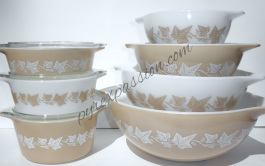 Sandalwood was produced for a short time in the early 1960s on a limited number of items. The pattern was available on the 4 Pc. Cinderella Bowl Set and 3 Pc. Bake, Serve, & Store Set. In the first edition of Pyrex Passion, the dates of production are listed as 1961-1962, the years in which the pattern is prominently featured in dealer catalogs. While researching information in early Corning Glass Works employee newsletters, new information was discovered that reveals the Sandalwood 4 Pc. Cinderella Bowl Set was released in late 1960 in time for the holiday season. The release was announced in the December 1960 edition of the employee newsletter, Gaffer News, stating, “Two of the bowls are sandalwood with white ivy decoration; the other two are white with sandalwood ivy. Each set is packaged in a gift carton with integral handle. Available about Nov. 21.” A Refrigerator Set and Butter Dish were also available in Sandalwood, but were likely offered as test items to a limited number of customers, explaining their relative scarcity. The MysteryAs many collectors know, Corning produced two patterns named Verdé during the late 1960s - early 1970s. The first Verdé pattern, available in shades of avocado with opal lids containing an olive pattern, appears in dealer catalogs and advertisements. But the second version is completely absent from all marketing, advertising, and dealer catalogs raising many questions: Why was a second version of Verdé created? Why wasn't it marketed or advertised in annual Corning dealer catalogs? Was it only available at certain retailers? How was it distributed? We now know the answer! Verdé Version 1: Verdé (Olives)The first version of Verdé contained solid-colored bowls in progressive shades of green. When launched in 1967, only the divided dish (063) and oval casseroles (043 and 045) contained opal lids as shown in the 1970 Dealer Catalog below. By 1972, the 470 Small Round Casserole Set (471, 472 and 473) and 480 Large Round Casserole Set (473, 474 and 475) also contained opal lids with the olive design. Boxes stated the pattern name as "Verdé... The New Avocado Colors." The product suffix code was "-16" as shown in the catalog. Verdé Version 2: Verdé (Square Flowers)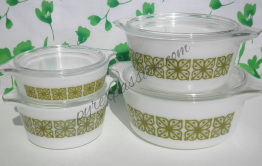 The second version of Verdé, produced during the same time period, contained a square flower design on most items. Mixing Bowls (401, 402, 403 and 404) and Cinderella Bowls (441, 442, 443 and 444) alternated with solid avocado bowls and the square flowers design. Plain, undecorated boxes, stated the pattern name simply as "Verdé" with the product suffix code "SP-16" attached to the item number. This alternate Verdé pattern was widely distributed based on the ease in which collectors can find the pattern in thrift shops and antique stores. 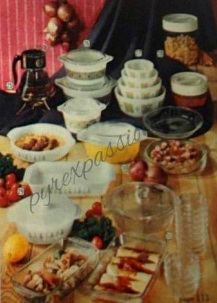 Image from 1970 Top Value Gift Catalog. Image from 1970 Top Value Gift Catalog. We now know that the second Verdé pattern was distributed through stamp programs popular in the 1960s and early 1970s. Drugstores, grocery stores, and gas stations distributed stamps to customers as part of their loyalty program. In exchange for stamps, customers could purchase items at redemption centers located throughout the country. Top Value stamps - a major competitor to S&H green stamps - were distributed at many merchants, such as Kroger grocery stores. The second Verdé pattern was available in exchange for Top Value stamps. For example, the 480 Set (473, 474, 475) with clear lids was available in 1970 by redeeming 2 1/2 stamp booklets. PYREX Mystery Solved! Orange Butterprint was officially Pumpkin Butterprint offered in 196512/7/2014
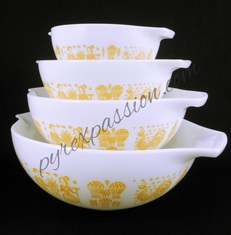 Pumpkin Butterprint Cinderella Set. Pumpkin Butterprint Cinderella Set. Butterprint was a popular Pyrex pattern offered from 1957-1968. Typically, the pattern appeared in white or turquoise on a contrasting white or turquoise background. However, the cinderella bowl set consisting of a 441, 442, 443, and 444 was also available in orange on a white (opal) background. The orange variation does not appear in Corning catalogs and had remained somewhat of a mystery in terms of when it was produced and how it was distributed. The set is somewhat hard to find indicating it was likely produced for a short amount of time. In PYREX Passion: The Comprehensive Guide to Decorated Vintage PYREX, the date estimate was given as the mid-1960s based on the orange color scheme which was available on other patterns, such as Town and Country, during the same time period. As it turns out, the date estimate was accurate. However, Flickr.com member, AquaOwl, helped solve the mystery.  Orange Butterprint, officially named Pumpkin Butterprint, was offered as an item in the 1965 S&H Green Stamp catalog. For 1 1/2 completed green stamp booklets, essentially 1800 green stamps, customers could purchase the set. Sets were boxed in plain boxes with the item number 440-SP. The 440 references the set number, while the "SP" may indicate "special" or "stamp program." The set was available throughout 1965 and until the catalog expired on April 30, 1966. PYREX Mystery Solved: "Navajo" is Officially "Oval Casserole with Serving Basket" Released in 19718/2/2014
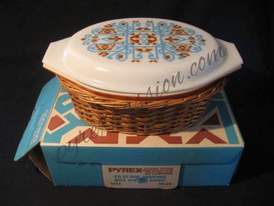 Photo courtesy of eBay seller atlanticconnection2010. Photo courtesy of eBay seller atlanticconnection2010. This 2 1/2 Qt Oval Casserole (045) has received many nicknames throughout the years, including "Navajo" and "Aztec" based on the geometric lid design. The official name and date of production were previously unknown. The previous date estimate, included Pyrex Passion was late the 1960s based on other items that included a wicker basket produced in 1969-1970. However, an eBay seller recently found the casserole with its original box, solving the Pyrex mystery! The official name of the casserole is simply "2 1/2 Qt Oval Casserole with Serving Basket." The date of production can be gleaned from the item number as 1971. Another Pyrex Mystery Solved! 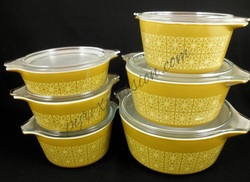 Autumn Floral 470 and 480 Sets. Autumn Floral 470 and 480 Sets. The Autumn Floral pattern was available on the 470 Set (471, 472, 473) and 480 Set (473, 474, 475). Previously the exact date of production was unknown, but estimated to be around 1964. However, new information has been found on a recent trip to the Corning Museum Rakow Research Library that confirms the date of production as 1966. Autumn Floral was shown in a 1966 dealer announcement alongside of the Blue Stripes (Barcode) 470 and 480 Sets. The announcement proclaimed that Autumn Floral and Blue Stripes provided "bright colors and designs to fit any décor. Each set beautifully gift boxed.” Within a few years, the Autumn Floral design would become the basic design element for the alternate Verde design that alternated patterned and solid-colored items on mixing and Cinderella bowls. 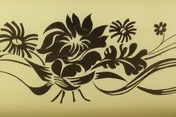 Thanks to the recent find of a "Golden Wildflower" 045 2 1/2 Qt oval casserole with the original box, we now know the official name and date of production. The casserole was officially named Golden Bouquet. Previously the date estimate for production was in the 1960s due to the back stamp and the gold design. Corning ceased using gold designs in 1970 due to the rising popularity of microwave ovens. The box shows the official date of production as 1967. The Golden Bouquet promotional casserole included a dual candle-warmer with round wooden handles, typical of other "golden" promotional items released the same year: Golden Wreath (043) and Golden Rose (045). Keeping track of the various "golden" items produced in the 1960s has always presented a challenge for collectors with so many casseroles with similar names and gold floral designs. 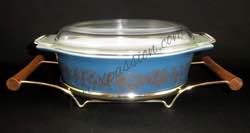 Previously, the dark blue 1 1/2 Qt (043) oval casserole produced in 1965 was unofficially named "Golden Bouquet" to help identify the pattern. But now that an official Golden Bouquet pattern has been identified, the naming confusion will likely continue. To distinguish between the two patterns, the unofficial "Golden Bouquet" 043 has been renamed "Golden Bouquet on Blue" in the pattern reference.
Blue Dianthus: Produced as a Sales Test in 1963!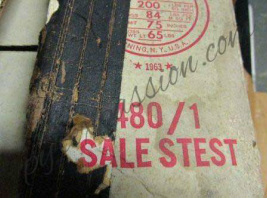 Photo courtesy of Flickr member mtnmama1022. Photo courtesy of Flickr member mtnmama1022. Original boxes often reveal helpful information, especially for rare or hard-to-find PYREX patterns that do not appear in dealer catalogs or advertisements. Recently, a collector acquired numerous vintage PYREX items from the estate of a 50-year employee of Corning in Charleroi, PA - the hometown of opal PYREX production. One of the items purchased was the 3 Pc. 480 Casserole Set in the original box. The box reveals the date of production as 1963. The box also shows that Blue Dianthus was a "Sales Test" pattern. Another PYREX mystery solved! |
Article Categories
All
Archives
September 2023
|
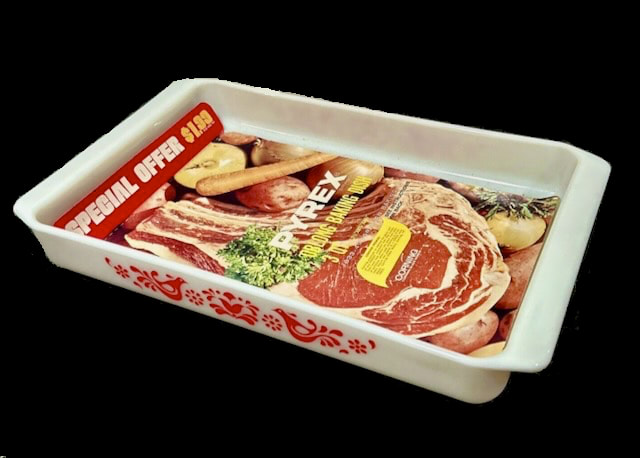
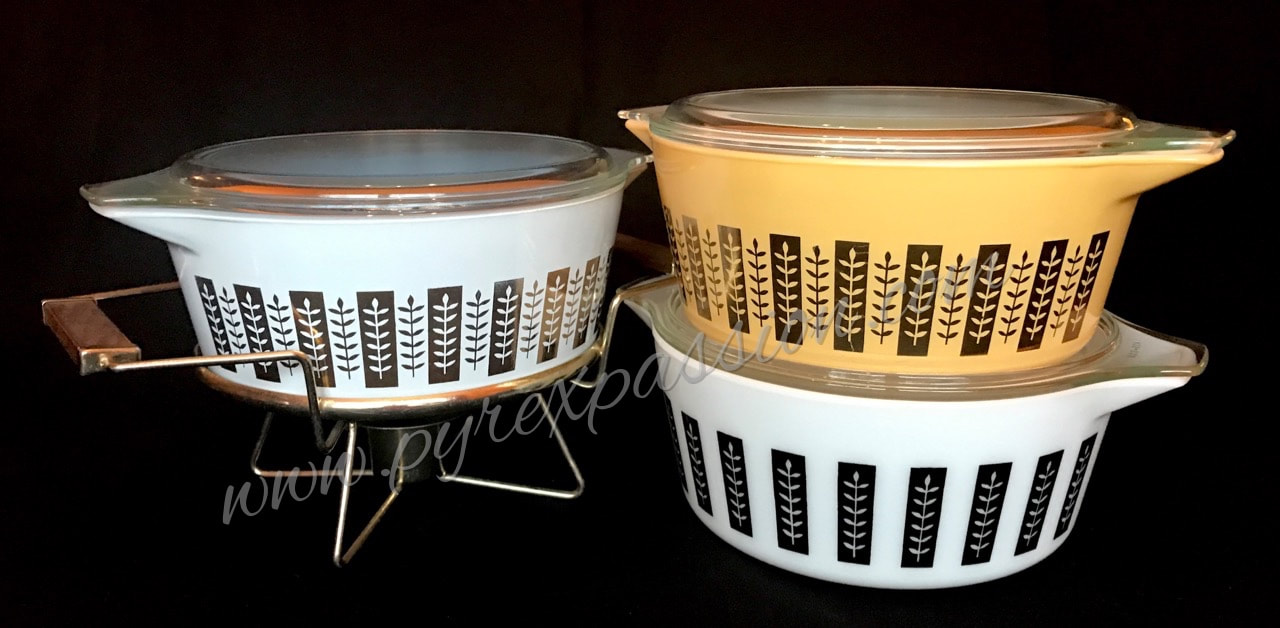
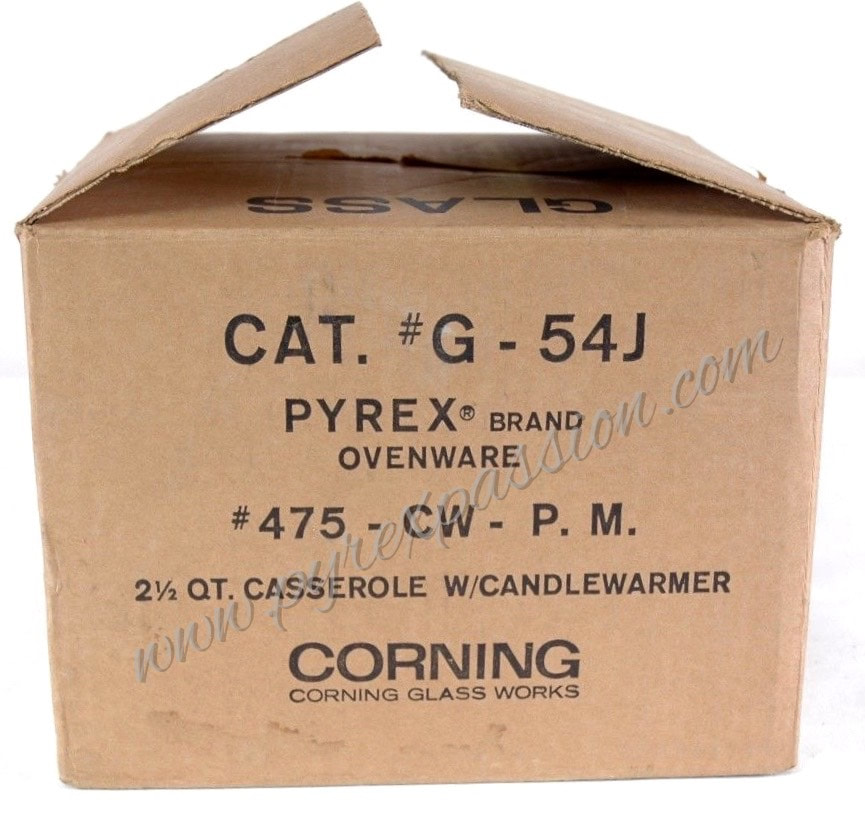
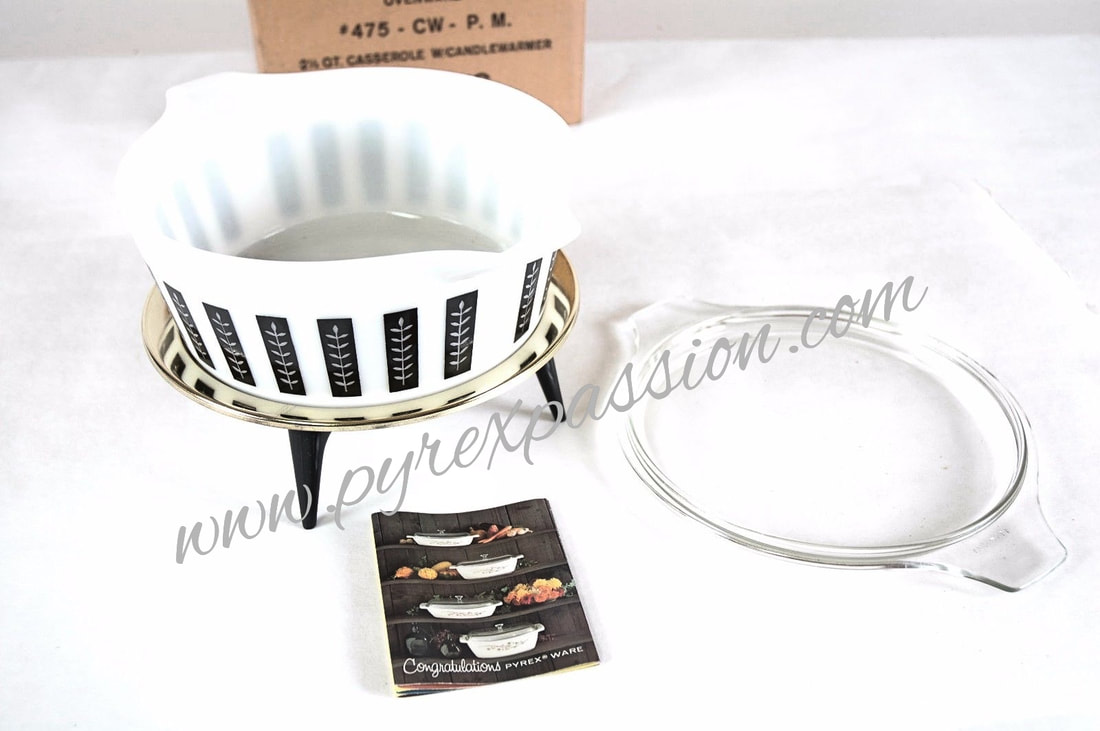
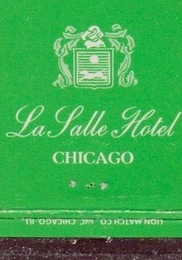

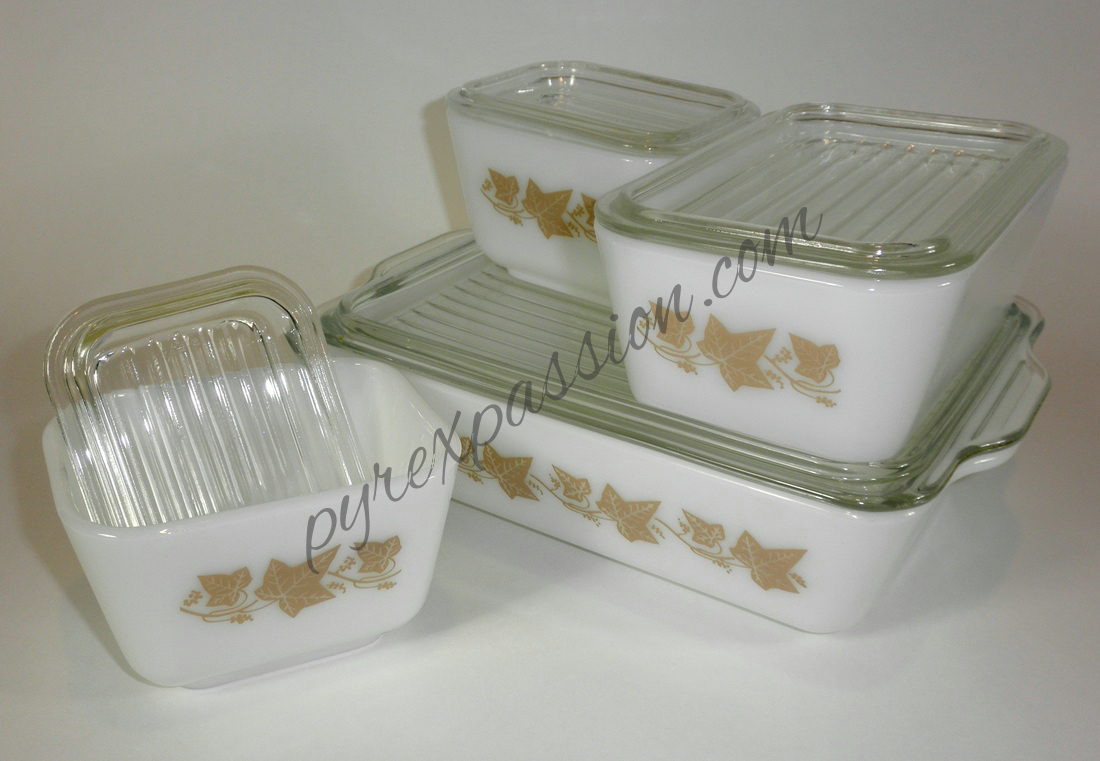
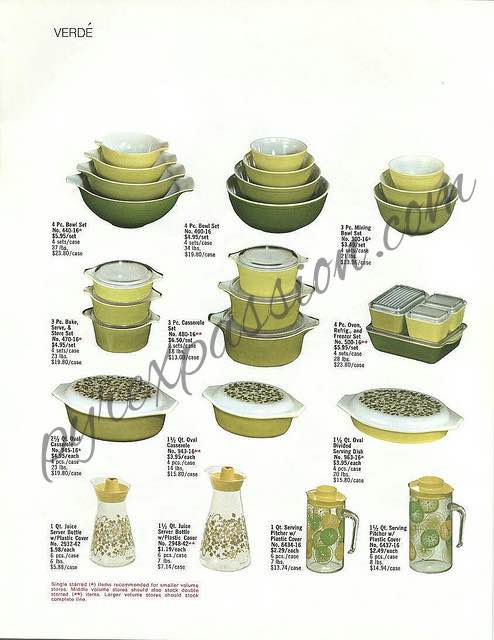
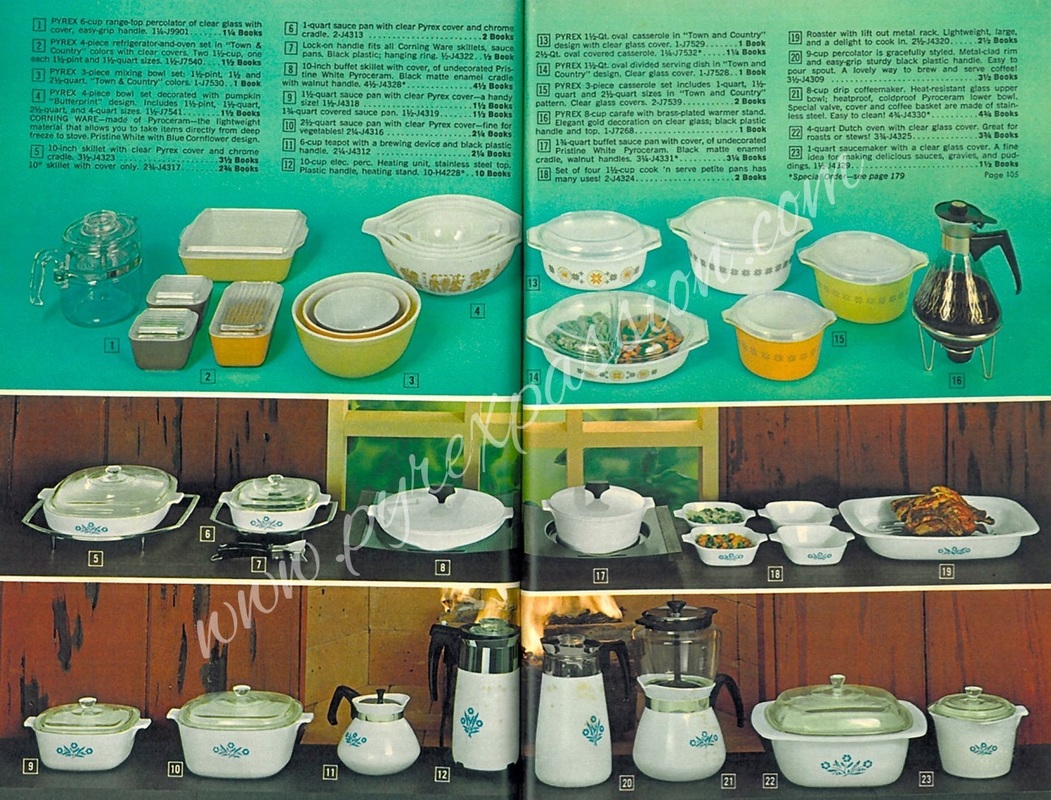
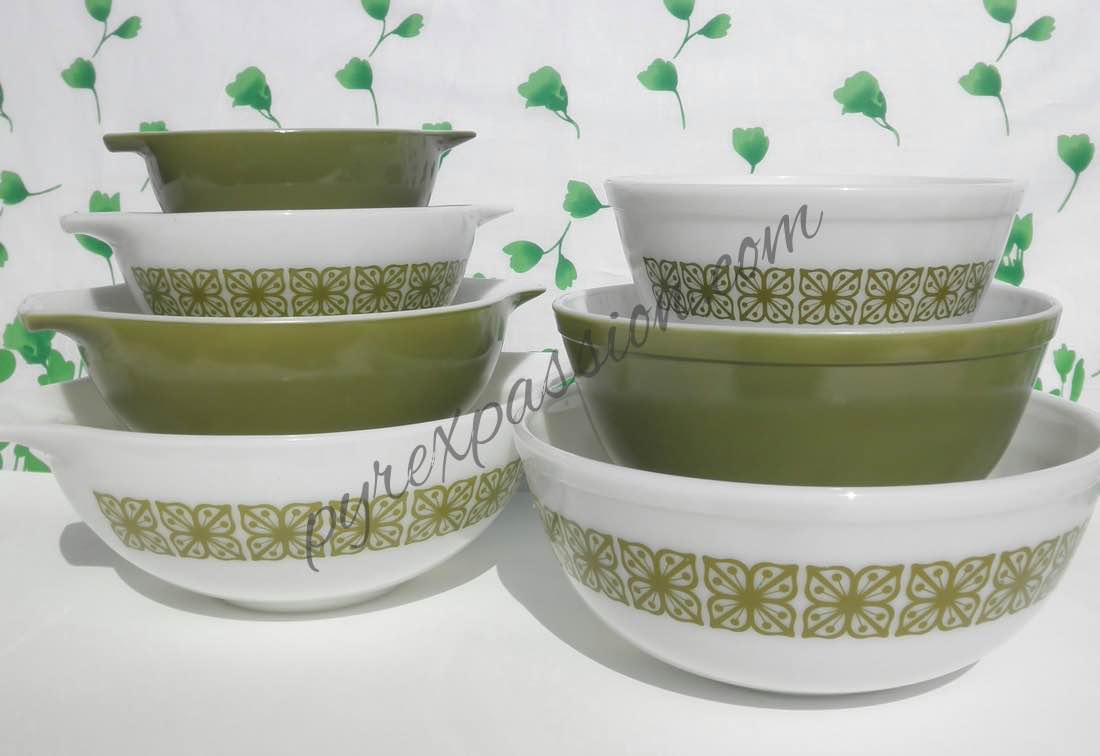
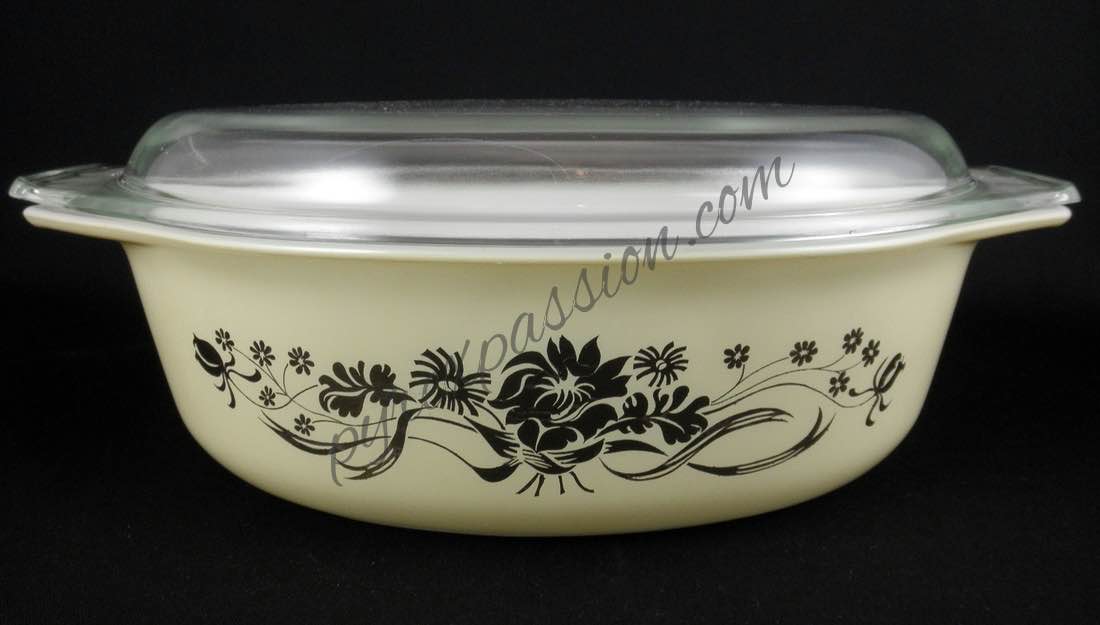



 RSS Feed
RSS Feed